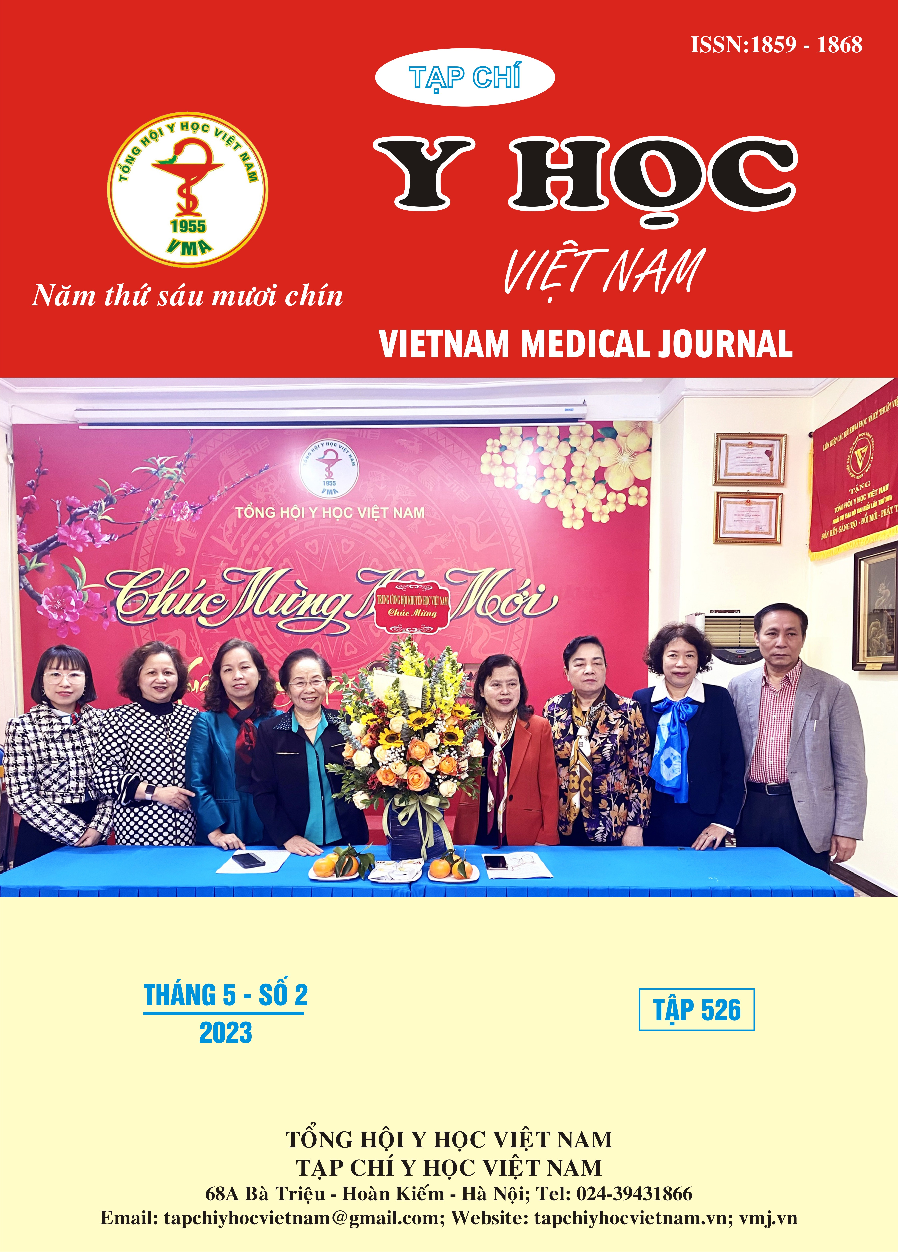THE ASSESSMENT OF QUALITY OF LIFE IN STROKE PATIENTS RE-EXAMINING AT STROKE CENTER IN BACH MAI HOSPITAL
Main Article Content
Abstract
Background: Cerebral stroke is a high cause of death. For those that survive, it can leave many sequelae that impact quality of life. Objectives: To assess overall and sub-area quality of life (“QOL”) in patients after cerebral stroke using the stroke-specific quality of life scale (“SS-QOL”) and to identify factors that may affect quality of life after stroke. Methods: A descriptive cross-sectional study was conducted on patients who came to be re-examined at the Stroke Center of Bach Mai Hospital one month after the onset of cerebral stroke. The set of interview questions comprised three sections: a general information section, an assessment of the patient’s ability to perform basic daily living activities using the Barthel Scale, and an assessment of the patient’s quality of life using the SS-QOL. Results: From August 2022 to January 2023, 207 patients experiencing cerebral stroke were re-examined at the Stroke Center of Bach Mai Hospital. After one month of cerebral stroke onset, 36.23% of the patients treated at the Stroke Centre had a good quality of life, especially in regard to functional health. Meanwhile, only 1.45% of the patients treated had a poor quality of life one month after cerebral stroke onset. After one month of treatment, a high percentage of patients – over 90% – could independently perform basic daily activities (based on the Barthel Scale). Research results also show that older people have a lower quality of life than younger people, people without any disease have a better quality of life than those with 1 or more comorbidities in the functional health field, patients with a high Barthel Index have a good quality of life across all domains. This difference is statistically significant with p < 0.05. Conclusion: After one month of treatment, patients had a fairly high average to good quality of life, especially in regard to functional health. There are some influence factors such as age and the number of comorbidities (especially hypertension) that affect a patient’s quality of life and the scores generated using the Barthel Scale.
Article Details
Keywords
Cerebral stroke, quality of life
References
2. World Stroke Organization (2015). World Stroke Campaign, [Accessed 16 October 2016].
3. Nguyễn Đình Tuấn (2020) “Đánh giá chất lượng cuộc sống bệnh nhân ở tháng thứ 3 sau đột quỵ não theo thang đo tác động của đột quỵ não (SIS 3.0)” luận án Tiến sỹ, Đại học Y Hà Nội
4. Đặng Thị Hân (2017) “Đánh giá chất lượng cuộc sống của người bệnh đột quỵ não điều trị tại bệnh viện y học cổ truyền tỉnh Nam Định năm 2017”, Tạp chí Khoa học điều dưỡng, tập 1 số 02
5. Cao Phi Phong và Trần Trung Thành (2013) “Đánh giá chất lượng cuộc sống của bệnh nhân sau đột quỵ”, Báo khoa học thành phố Hồ Chí Minh, 1(17), 78-84
6. Sarah M. Alotaibi et al (2021) “Assessment of the stroke-specific quality-of-life scale in KFHU, Khobar”, Neurosciences Journal, 26 (2),171-178.


